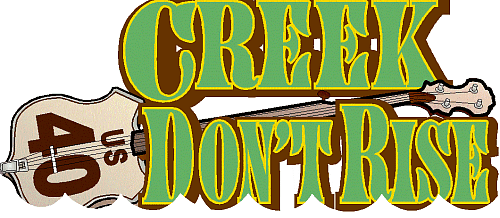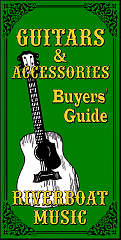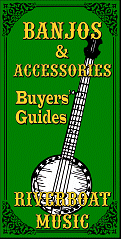



|


How to Give Guitar Lessons - A Humorous Look
| Written by Paul D. Race |
 First of all, hone your craft. For years. Devote yourself to learning as much about the instrument as you can, and play out often enough to keep yourself "fresh." Get plenty of experience in several different styles of music so you know what the guitar "brings to the table" in every popular style. Now you're ready.
First of all, hone your craft. For years. Devote yourself to learning as much about the instrument as you can, and play out often enough to keep yourself "fresh." Get plenty of experience in several different styles of music so you know what the guitar "brings to the table" in every popular style. Now you're ready.
Week 1 - Meet with at least one parent. Explain that you teach guitar, not just a single style or handful of songs but the instrument itself. You want to give the student the tools to continue to grow as a musician long after the lessons are over or his or her tastes in music change. Note that the parent seems to think that's a good idea.
Insist that the student start with an acoustic guitar. Explain to the student that even rock and rollers are better guitar players if they really understand the instrument before cranking up the distortion. Note that the student has never heard of Eric Clapton.
Week 2 - Listen to the student whining about how much harder the acoustic makes it to play the power chords that the student's best friend showed him. Try to ignore the sound of a cheap electric guitar playing distorted power chords in the next room where the teacher "everybody likes" is giving a "lesson."
Week 3 - Insist that the student learn to get his guitar into good relative pitch without using a digital tuner. Explain that no guitar is perfectly in tune across the whole fretboard, so "serious" guitar players eventually train their ears so they can achieve the best overall tuning for the keys usually they play in. Try to ignore the sound from the next room where the teacher "everybody likes" is obviously using a digital tuner to tune the student's guitar for him.
Week 4 - Insist that the student learn flat-picking patterns instead of constantly banging on all six strings. Explain that learning early how to pick individual strings will give him a solid foundation for learning all kinds of techniques in the future. Listen to the student complaining that such-and-such a band only plays chords and they're rich so they must be better than you are. Ignore the banging sound from the next room of strummed chords on a cheap electric guitar, including an open D chord on which the student has not yet learned to deaden, avoid, or "thumb" the low E string.
Week 5 - Start the student out with a few simple songs that will give him practice changing chords. Listen to the student whining that he doesn't like these songs and that his best friend could play the introduction to "Smoke on the Water" after his FIRST LESSON! Ignore the sound of the opening bars of "Smoke on the Water" leaking in from the next room.
Week 6 - When the student shows up without any evidence that he has practiced the songs you gave him, listen to the excuse that the songs you picked out were "bogus." Explain to him that you aren't trying to teach him specific songs; you're trying to teach techniques that can be subsequently applied to literally hundreds of thousands of other songs. Ignore the sound of the student next door butchering the opening bars of "Stairway to Heaven."
Week 7 - Give the student a chart of the "Circle of Fifths" and explain that learning to "play by ear" really consists of learning the relationships among chords so thoroughly that it becomes second nature to choose the right chords, even for songs you've never heard before. Watch the student react as if asking him to know twelve chord names at the same time was akin to asking him to memorize the Periodic Table of the Elements. He has it on good authority (possibly from a Jack Black movie) that the only thing you need to play Rock and Roll is the ability to "feel it in your gut" and channel your "rage against The Man!" Ignore the sound of the student next door butchering "Born to Be Wild."
Week 8 - Try to be nice about the fact that the student still hasn't practiced anything you've shown him. Ask him to find the D chord on his "Circle of Fifths" chart. Bring out another copy, since he's lost his. He can find the D chord after looking for a few minutes because it's labeled "D." Now ask him to use the chart to point out the two other chords that are most likely to be used in a song in the key of D. When he points out the F and Ab chords, you remind him how the chart works, and explain again that the adjacent chords G and A are most likely to be used in a song set in D. Then ask him what chords he would use if the singer requested the song to be lowered to C. Listen to him explain that such things never happen in the "real world" and you're asking him to acquire a skill he'll never use. Try to ignore the sound of the guitar student next door singing a simple three-chord song that is obviously out of his vocal range because he only knows how to play it in one key.
Week 9 - Try to be nice about the fact that the student still hasn't practiced anything you've shown him or still doesn't understand the most basic uses of the "Circle of Fifths." When he explains that the songs you picked for him are "bogus," tell him to bring in five or six songs he would like to try to learn and you'll pick one you think you can use to teach. In the meantime make him do his "practicing" in front of you, which will probably entail 5 minutes of listening to him fumble through a few very simple songs he should have "nailed" by now and ten minutes of listening to a long list of sports activities and homework assignments that got in the way. Show him two more chords and a song that uses them to practice in the coming week.
Week 10 - Try to be nice about the fact that the student still hasn't practiced any of the songs you showed him and that the songs the student brought in are all unlistenable. Pick one you think you can teach him anyway, work out the chords in real time, and show him how the circle of fifths helped you figure them out, once you figured out which key the song was in. Write down the chords for him and show him a picking pattern he could use. Go over it twice before he leaves, making him try to play along.
Week 11 - Try to be nice about the fact that the student hasn't practiced the song you worked out for him (or any of the other songs you gave him to learn). Pretend that you don't find his excuses laughable. Introduce the student to the four most common barre chord structures and show how they can allow him to play almost any song in almost any key. Tell him that they're really "Secret Super-Power Chords" so maybe he'll stop whining about the "power chords" his friend plays through the distortion pedal on his electric. Introduce a song that uses at least one of those chords.
Week 12 - Try to be nice about the fact that the student has yet to learn ANY of the material you've given him to practice, learned one thing about the Circle of Fifths, or learned how to play the one barre chord you asked him to learn. Listen to the student whining how he's been taking lessons for eleven weeks now, and he has yet to learn anything of value. Agree with him as to the outcome but not as to the reason. Have a conference with the parent, who swears that the kid practices "all the time," so it must be your fault that the student has learned virtually nothing. Ask the parent what the student is playing, and learn that all of the "practice time" has been spent trying to work out the introduction to "Smoke on the Water." Pray silently for the ability to forgive the student, his parents, and Deep Purple.
Give the student the name of the teacher that "everybody likes," while standing firm on your refusal to refund twelve weeks' worth of lesson fees.
Call the first student on your waiting list to set up a meeting with the student and at least one parent. Explain that you teach guitar, not just a single style or handful of songs but the instrument itself. You want to give the student the tools to continue to grow as a musician long after the lessons are over or his tastes in music change. Note that the parent seems to think that's a good idea.
 Whatever else you get out of our pages, I hope you come away with some great ideas for "sharing the joy."
Whatever else you get out of our pages, I hope you come away with some great ideas for "sharing the joy."
And please stay in touch!





All material, illustrations, and content of this web site is copyrighted ? 2001, 2002, 2003, 2004, 2005, 2006,
2007, 2008, 2009, 2010, 2011, 2012, 2013, 2014, 2015, 2016, 2017, 2018, 2019, 2020 by Paul D. Race. All rights reserved.
Creek Dont' Rise(tm) is a participant in the Amazon Services LLC Associates Program, an affiliate advertising
program designed to provide a means for sites to earn advertising fees by advertising and linking to Amazon.com.
Note: Creek Don't Rise (tm) is Paul Race's name for his resources supporting the history and
music of the North American Heartland as well as additional kinds of acoustic and traditional music.
For questions, comments, suggestions, trouble reports, etc. about this page or this site, please contact us.
| Visit related pages and affiliated sites: | |||||
| - Music - | |||||

|
 |
 |

|

|

|

|

|

|

|

|

|

|

|

|

|

|

|
| - Trains and Hobbies - | |||||
 |

|

|  |
 |

|
| - Christmas Memories and Collectibles - | |||||
 |

|
 |

|
 |

|
| - Family Activities and Crafts - | |||||
 |

|

|

|

|

|
